Cook Up A Blast From The Past With Some Vintage Kitchen Items
There are many kitchen staples that avid cooks and bakers swear by, such as KitchenAids, blenders, and even specific sets of knives. But those haven’t always been go-to kitchen tools. Throughout history, tools have changed, evolved, and, for some, been completely tossed aside.
Back in the 1960s, kitchens had non-electric scales to portion food, while the 1930s saw a specific tool to cut green beans. And some of these gadgets look like bizarre medical devices. Get ready; these vintage kitchen items are a sight to behold.
A Box Designated For All Types Of Bread
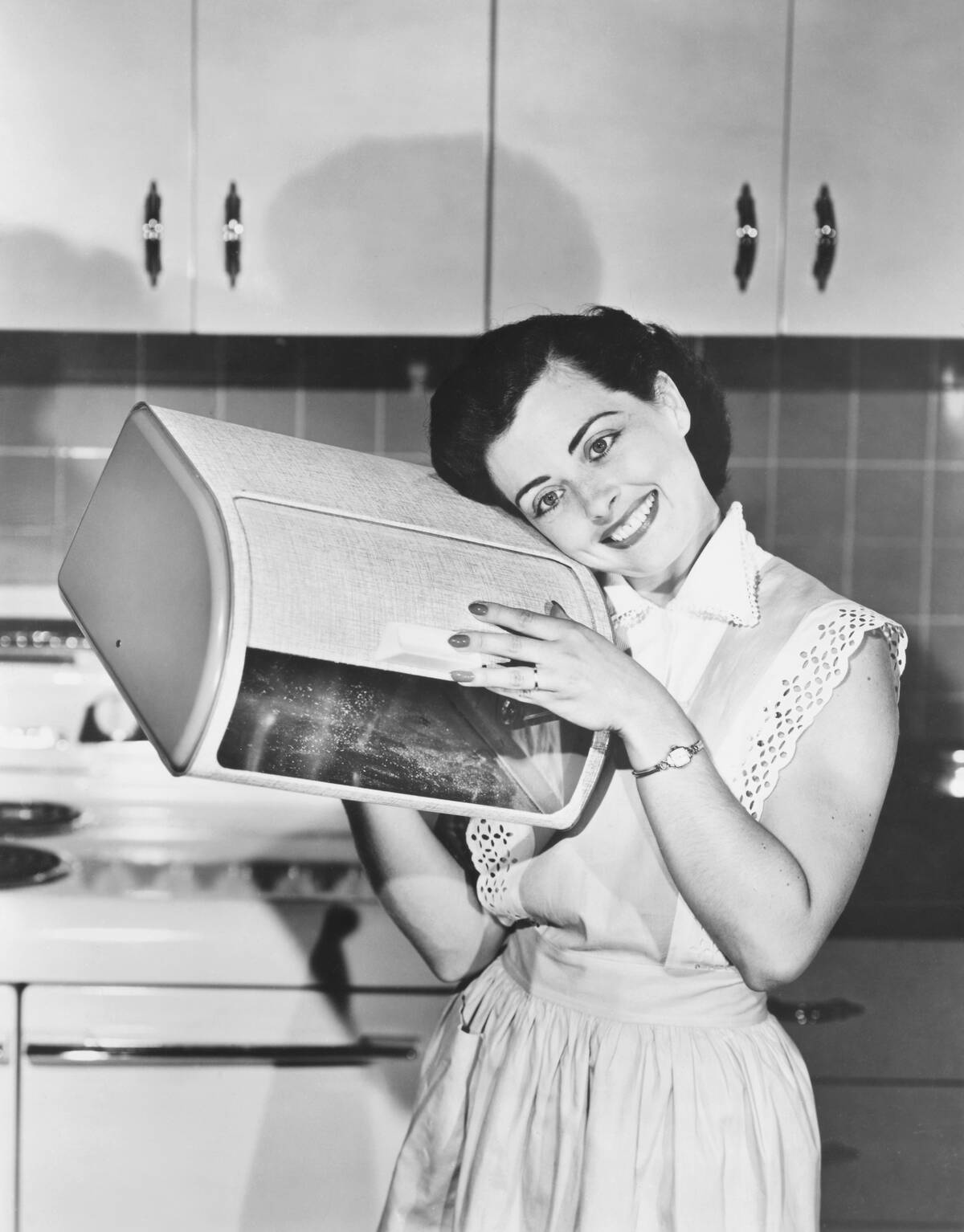
In this day and age, one thing you probably don’t see in very many kitchens is a bread box. These funky containers typically sat on the kitchen counter and contained, you guessed it, bread. They might look funny, but these boxes were actually quite useful.
The air circulation in the box is just right, so the bread won’t mold as quickly, while the humidity inside is the perfect amount to keep the bread soft and fluffy. Craftsmen of the 1950s knew what they were doing with this kitchen tool!
Butter Molds To Give Your Spread Some Pizzaz
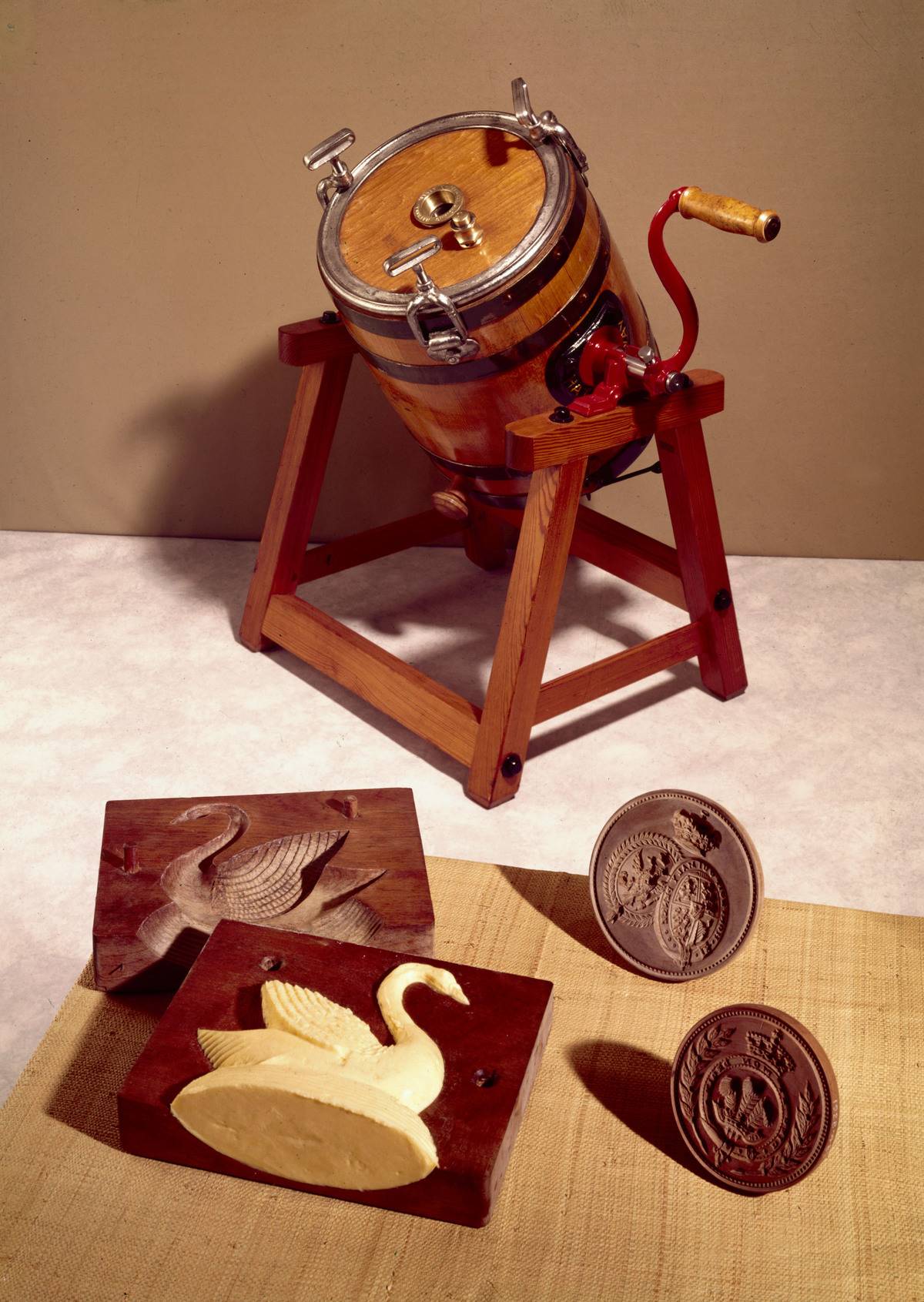
For holidays, you might see butter shaped like a Christmas tree, a turkey, or maybe even a star. But before people were able to drive over to the grocery store to grab their preferred shape of butter, they had to make the molds to form the butter themselves.
In the 18th and 19th centuries, farmers would carve their own molds for the butter they churned. According to the State Museum of Pennsylvania, farmers who took pride in their craft liked to “mark their wares.” So, these wooden molds were a way for farmers to put a trademark stamp on their product.
No Farmhouse Was Complete Without A Cone Sieve

In the 1960s, many people had cone sieves in their kitchen. Now, this tool was used for a very important purpose, to crush out as much puree from various fruits as possible. Simply put, it was a way for people to make homemade sauces.
All you have to do is place the tool over a large bowl, then place all parts of the fruit in the cone. This includes the guts, seeds, and skin. Then, mash it with the wooden masher. In no time, there is a beautiful bowl full of puree.
French Butter Dishes Kept Butter At The Perfect Temperature
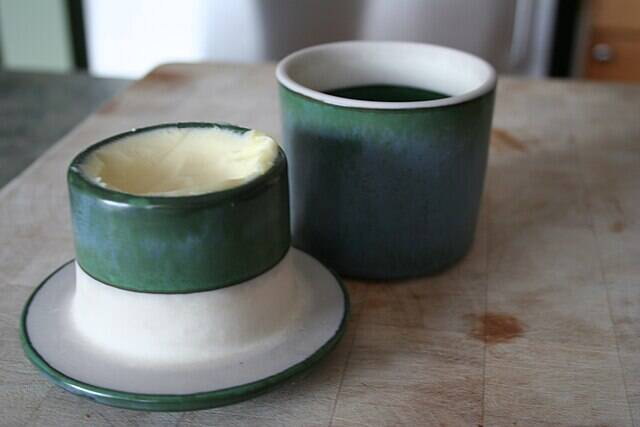
The French butter dish was a pottery design made back in the 19th century. The idea was to make it so that butter was always at the perfect spreadable temperature, never hardening too much but not melting either. Its design has two parts, a cup that holds the butter and acts as a lid and a base that holds the water.
The water acts as a seal, keeping the air away from the butter while making it so that the spread doesn’t have to be refrigerated. The concept was wildly popular through the ’70s and ’80s with American craftsmen.
This Cast Iron Coffee Grinder
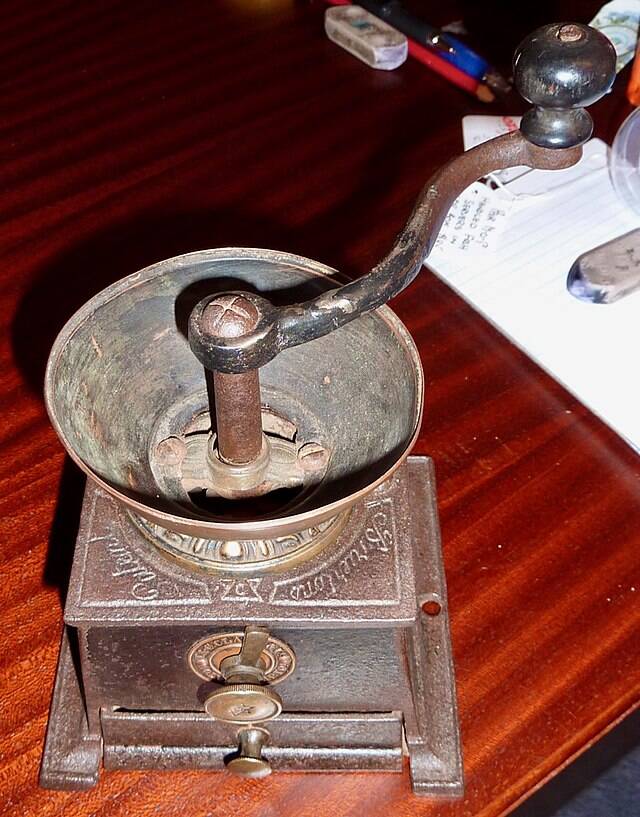
Another kitchen tool to come out of the 1930s was this cast iron coffee grinder. The device was quite simple to use. All the user had to do was put the coffee beans into the top “bowl,” crank the lever, and watch as freshly ground coffee winds up on the little drawer.
This model evolved into the coffee grinder we see today, either at home or at a coffee house. And while they’re not nearly as heavy as this vintage cast iron model, they work just as well and are probably a bit easier to move around a store.
A Green Bean Slicer For a Quick Side With Dinner
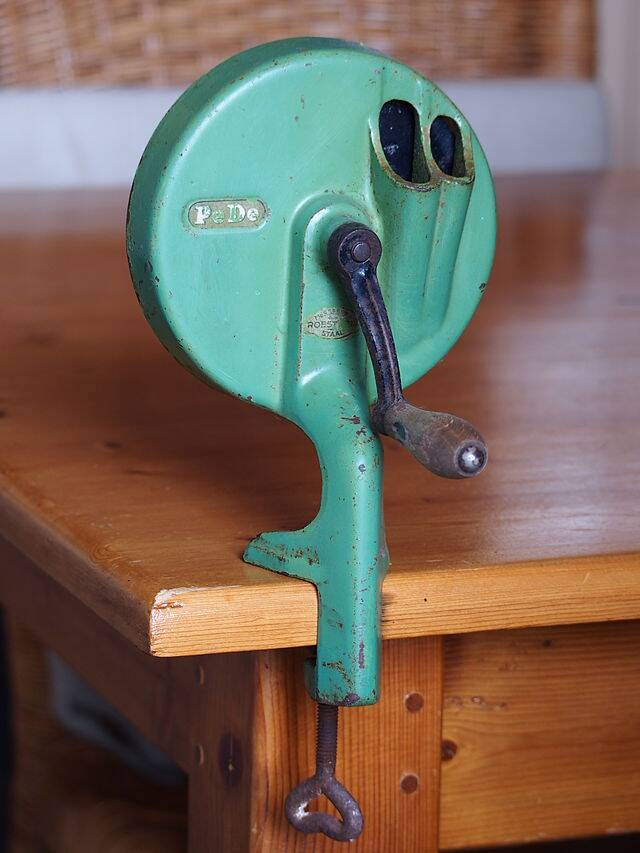
This 1930s kitchen tool is something everyone should search for while thrift shopping. This cast-iron device is actually a very capable bean slicer. Instead of taking a long time chopping beanstalks with a knife, people would cut time in half by using a bean slicer.
All they had to do was place the stalk in one of the holes. Then, crank the handle and watch as the beanstalk is sliced into perfectly proportioned pieces for cooking. Unfortunately, they’re difficult to find. But if you’re lucky enough to locate one, know that they are built to last.
A Cookie Press To Make Sure The Shapes Were Just Right
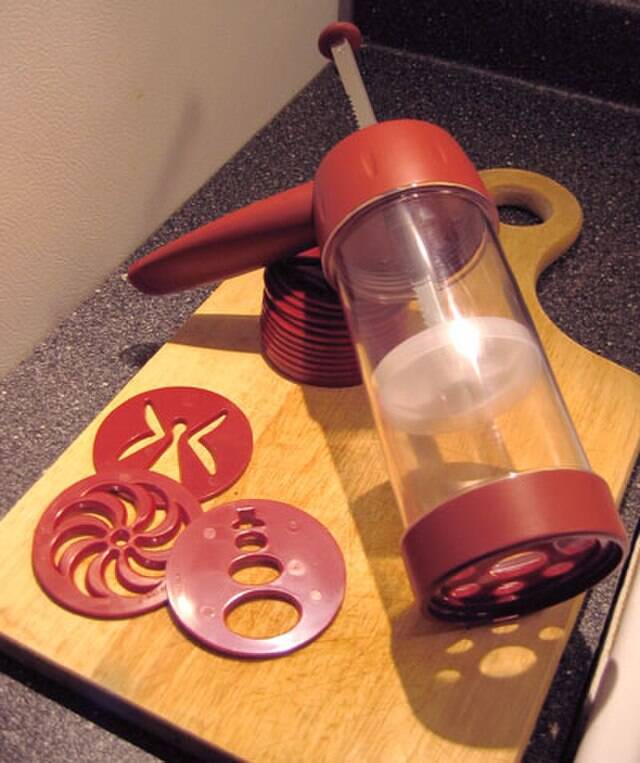
Before people spooned out cookie dough onto baking sheets, there was this handy-dandy tool called a cookie press. We know it looks like a tire pump for a bicycle, but these nifty gadgets were pretty great when it came to making delicate-looking cookies.
Unfortunately, this Mirro brand cookie press that was popular in the ’50s is no longer available for purchase. The company eventually stopped making them, leaving holiday cookie bakers to their own devices in the kitchen. Of course, there are “modern presses” on the market, but users of the vintage press swear by its cookie-making powers.
Food Processors Are The New Food Mills
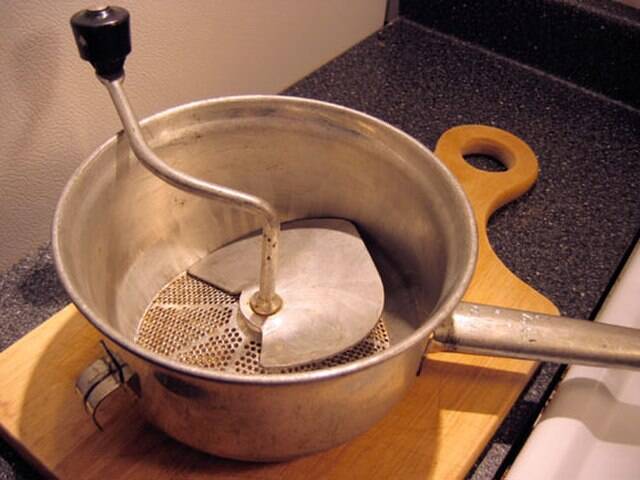
This interesting looking tool is called a food mill. Comparatively speaking, it is similar to the cone sieve, but without the mashing. Instead, the mill has a crank to help mash soft foods. It is almost like a vintage food processor, but for soft foods.
The mill consists of three parts, a bowl, a crank, and a bottom plate with holes (similar to a colander). Some uses for this device are removing seeds from cooked tomatoes, making jellies or any type of puree, and preparing mashed potatoes.
Hand Mixers Were The Original KitchenAids
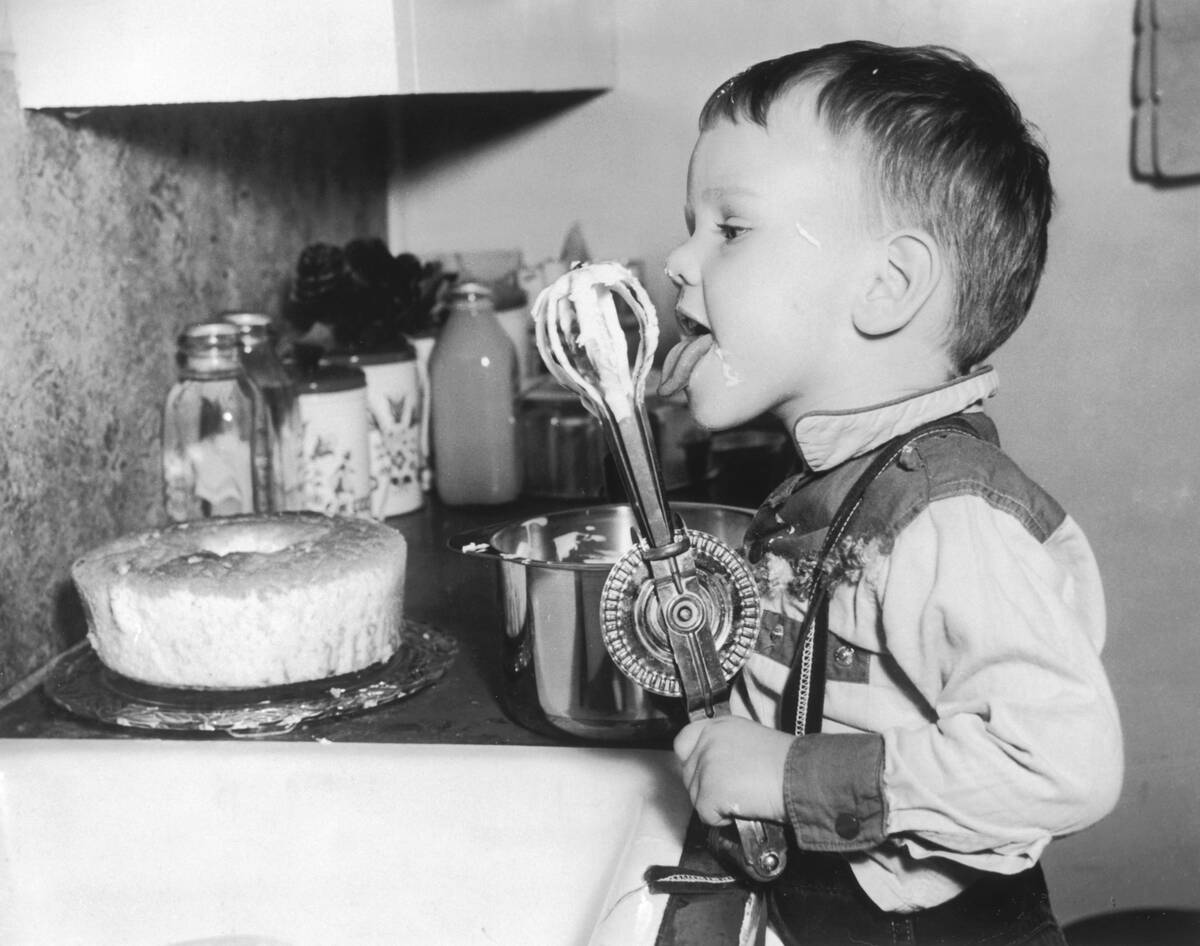
A lot of interesting kitchen tools came out of the 1950s, including this nifty hand beater and mixer. Before the rising popularity of electric mixers and, eventually, KitchenAids, people would get an arm workout manually mixing ingredients.
The top handle was used to put pressure into the ingredient-filled bowl, so the mixer did its job correctly. Then, the cook or baker would spin the crank to get the beaters to move through the ingredients. It’s no wonder we don’t see these lying around people’s kitchens anymore!
Iron Trivets For Very Hot Dishes To Cool Down On
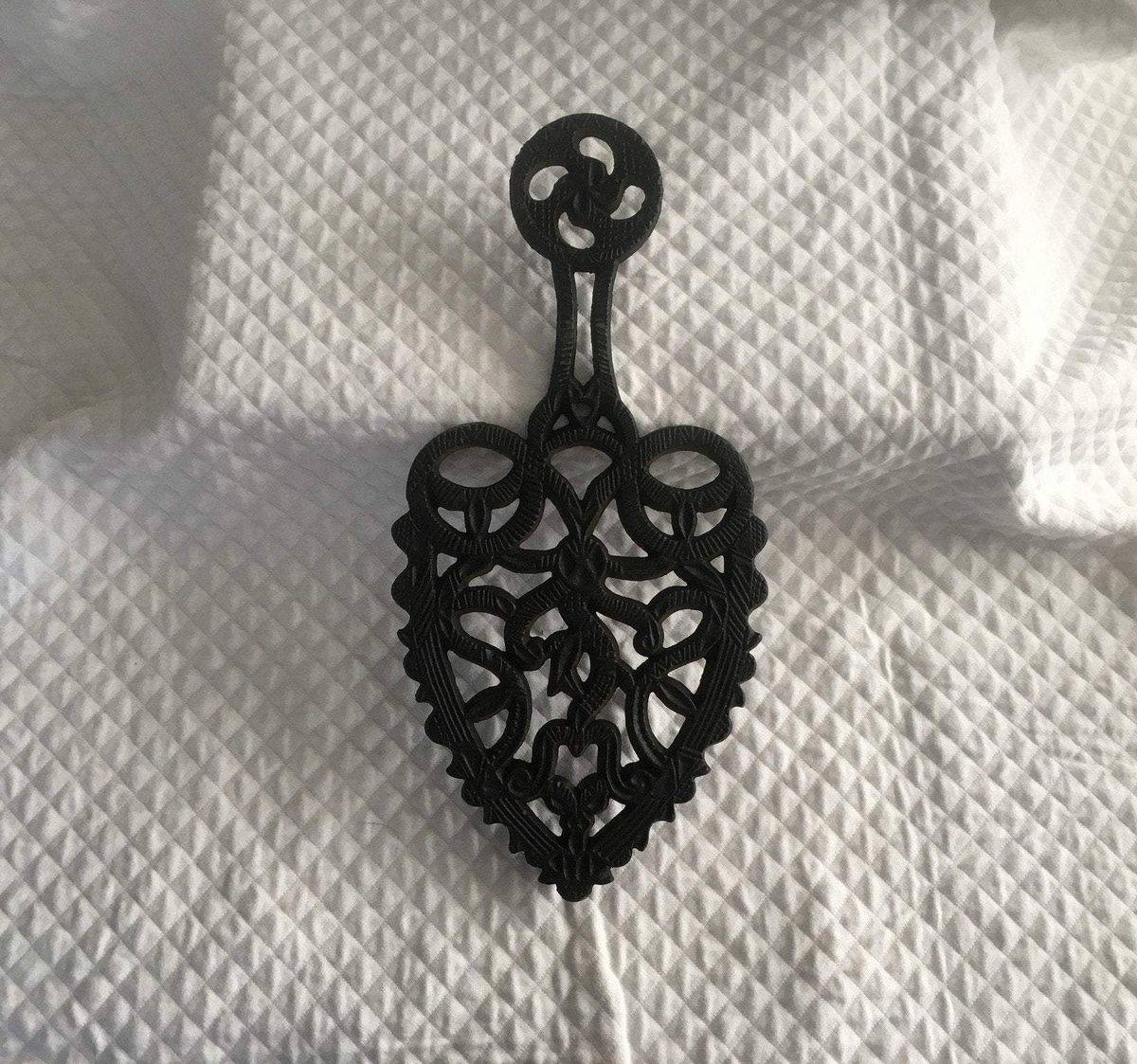
Although you might see one of these tools floating around your grandma’s house, they’re probably not a regular kitchen item among your friend group. Cast iron trivets were used as a type of hotplate and were wildly popular among 1930s households.
The base of the trivet was used to place hot kettles, pots, and skillets, while the little feet on the bottom side made it so the heat from the object didn’t damage the surface it was protecting.
Egg Poaching Pans For The Perfect Brunch
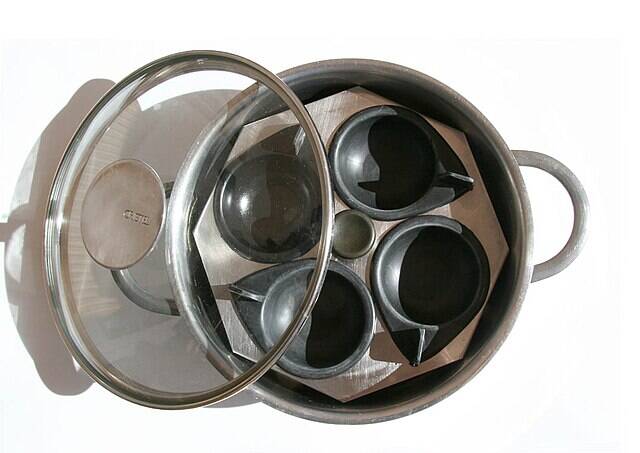
Egg poaching pans really should make a comeback because we can’t think of an easier way to whip up four perfectly poached eggs at the same time. These pans are very easy to use and should be your next kitchen purchase.
All that’s required was a bit of water in one of the pans. Then, place another pan on top, cracking eggs into each of the cups. It took a few minutes for the eggs to poach, but when they did, they were probably delicious!
French Fry Cutter To Get Your Fry Fix
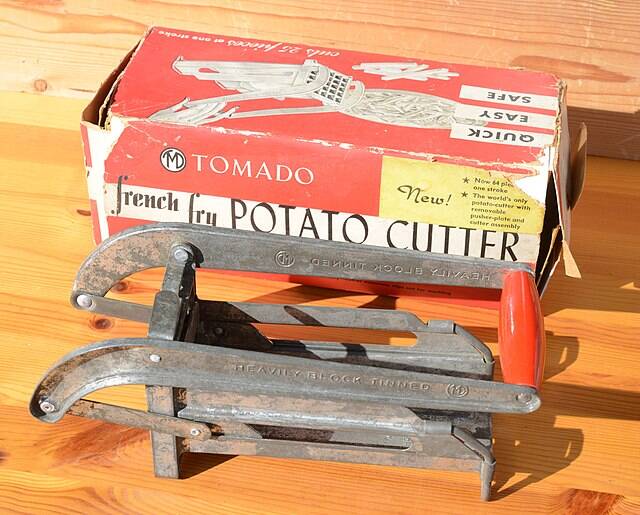
While it is very rare to see this device in household kitchens nowadays, it used to be a staple tool. This contraption is a heavy-duty French fry cutter used to make steak fries from potatoes.
Although they’re not very common in homes, there is one place that you might see a modernized version of this vintage tool. Restaurants have industrial-sized French fry cutters for daily production. So, we’re thankful for this 1950s tool for allowing us to make a device to mass-produce fries.
Non-Electric Kitchen Scale For Portion Control
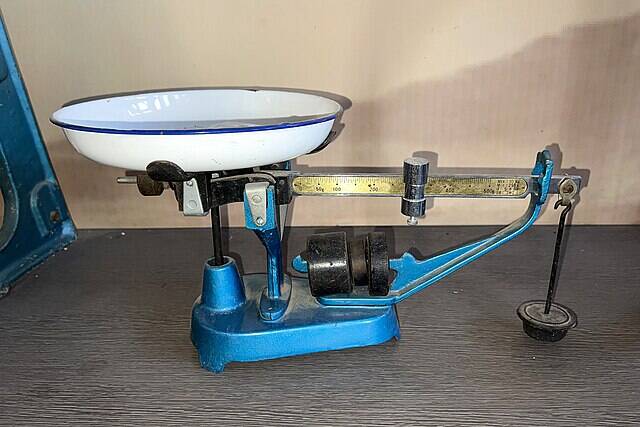
If you see a non-electric farmhouse scale sitting on someone’s kitchen counter, it is most likely for decoration. These scales used to be a kitchen staple for those who wanted to portion out their food, but they have since been replaced by more modernized technology.
Today, food scales are digital, making them very user friendly. They’re also much smaller than their vintage counterparts, making them easier to store in the pantry and move around in the kitchen.



